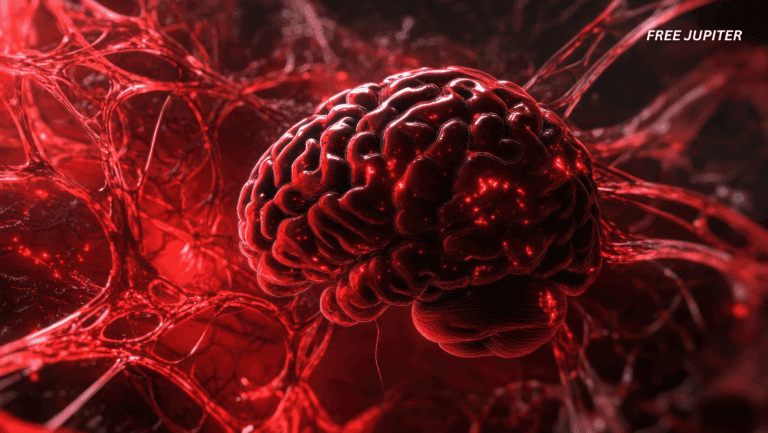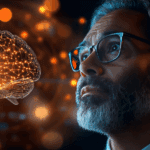Friendly Note: FreeJupiter.com shares general info for curious minds 🌟 Please fact-check all claims—and always check health matters with a professional 💙
Imagine carrying not just your own memories, but the emotional echoes of your ancestors’ hardest days. Recent scientific discoveries suggest that the pain experienced by previous generations may leave a subtle yet lasting mark, not just in stories or family lore, but in the very way our bodies function. This phenomenon, known as the inheritance of trauma, is reshaping our understanding of mental health, family dynamics, and even the fabric of society.
The Science Behind Inherited Trauma
At the heart of this revelation is the field of epigenetics. Unlike genetics, which deals with the DNA sequence itself, epigenetics focuses on changes in how genes are expressed. These changes don’t alter the underlying genetic code but can turn genes on or off in response to environmental factors—including stress and trauma.
A groundbreaking study examined 48 Syrian families spanning three generations. Among these families were women who were expecting children during two of Syria’s most tumultuous periods: the 1982 Hama massacre and the 2011 Syrian uprising. By analyzing DNA samples from individuals now living in Jordan, researchers uncovered something remarkable: distinct changes in epigenetic markers.
What the Research Revealed
The study identified 14 significant epigenetic modifications. Importantly, these changes were not found in the DNA sequence itself but in how those sequences functioned. Even more striking, eight of these changes were passed down from grandparents to grandchildren—individuals who had never directly experienced the violence themselves. These inherited modifications were linked to a range of mental health challenges, including depression, anxiety, and a process known as accelerated aging, which can increase the risk for illnesses typically associated with older age.
This means that the effects of trauma can ripple outward, affecting not only those who lived through it but also their descendants. The implications are profound: the suffering of one generation can become a biological legacy for the next.
Read more: 17 Signs That You Had Truly Great Parents, Backed by Psychology
Beyond War: The Wider Impact of Trauma
While the study focused on the trauma of war, its findings have far-reaching implications. Any form of violence—whether it’s domestic abuse, sexual violence, or other types of interpersonal harm—can trigger similar epigenetic changes. The effects of such trauma are not confined to individuals; they spread through families and, by extension, through communities and societies.
This phenomenon transforms what might seem like a personal ordeal into a collective challenge. When violence touches one person, it can send shockwaves through their family tree, affecting children and grandchildren who may never know the full story of what their ancestors endured.
Resilience in the Face of Adversity
Despite these sobering findings, there is also cause for hope. Connie Mulligan, one of the authors of the study, emphasizes the remarkable resilience of the families involved. “In the midst of all this violence, we can still celebrate their extraordinary resilience,” she notes. “They are living fulfilling, productive lives, having children, and carrying on traditions.”
Mulligan’s words highlight an important truth: while trauma can leave its mark, it does not define the future. The families in the study have found ways to thrive, demonstrating that the human spirit is capable of remarkable adaptation and strength.
Why This Matters: Empathy and Policy
The idea that trauma can echo through generations is not just a scientific curiosity—it has real-world implications. Understanding this connection can foster greater empathy for those who have experienced violence, encouraging society to view their struggles through a more compassionate lens. It also underscores the importance of addressing violence at its roots, rather than treating only its immediate symptoms.
For policymakers, these findings are a call to action. Recognizing the long-term, intergenerational effects of trauma means that efforts to prevent violence and support survivors must be a priority. By investing in mental health services, community support, and education, societies can help break the cycle of inherited trauma and build a healthier future for all.
The Science Behind the Scenes
To understand how trauma can be inherited, it helps to delve a little deeper into the science. Epigenetic changes do not alter the DNA sequence itself; instead, they affect how genes are expressed. Think of DNA as a library of instructions, and epigenetic markers as bookmarks that tell the body which instructions to follow and which to ignore.
When a person experiences trauma, their body’s stress response can trigger changes in these epigenetic markers. Some of these changes can be passed on to offspring, potentially influencing their health and behavior. This process is still being studied, but the evidence is mounting that our experiences—good and bad—can leave a lasting imprint on our biology.
Read more: What ‘Gentle Parenting’ Really Does For Your Kids
Real-Life Stories: The Human Side of the Science
While the science is compelling, it’s the human stories that bring it to life. Consider a family that fled war-torn Syria, seeking safety in a neighboring country. The parents may have survived unspeakable horrors, but their children, born in peace, still carry the invisible scars of that trauma in their genes. These children may struggle with anxiety or depression, not because of anything they’ve experienced directly, but because of what their parents and grandparents endured.
These stories are not unique to Syria. Around the world, families who have survived violence, oppression, or displacement are discovering that their past is not as distant as they might have hoped. The legacy of trauma is a silent companion, shaping lives in ways that are only now beginning to be understood.
Breaking the Cycle: What Can Be Done?
The knowledge that trauma can be inherited is not meant to inspire fear or hopelessness. On the contrary, it offers a roadmap for healing. By recognizing the intergenerational effects of trauma, we can take steps to support those who are most vulnerable.
Mental health care is a critical component of this effort. Providing access to counseling, therapy, and support groups can help individuals and families process their experiences and build resilience. Community programs that foster connection and belonging can also play a vital role in breaking the cycle of inherited trauma.
Education is another powerful tool. By teaching people about the effects of trauma and the importance of mental health, we can reduce stigma and encourage more people to seek help. Schools, workplaces, and community organizations all have a part to play in creating a culture of understanding and support.
The Role of Society: A Collective Responsibility
Ultimately, addressing the legacy of trauma is not just the responsibility of individuals or families—it’s a challenge for society as a whole. By investing in programs that prevent violence, support survivors, and promote mental health, we can help ensure that the scars of the past do not dictate the future.
This is not just about science; it’s about humanity. It’s about recognizing that our actions—and our inactions—have consequences that can ripple through time. By choosing empathy, compassion, and action, we can help heal the wounds of the past and build a brighter future for generations to come.
Looking Ahead: The Future of Trauma Research
As scientists continue to explore the mysteries of epigenetics, new discoveries are likely to emerge. Researchers are investigating how other forms of adversity—such as poverty, discrimination, and environmental stress—might also leave epigenetic marks. The hope is that by understanding these mechanisms, we can develop more effective interventions to support those affected by trauma.
In the meantime, the message is clear: trauma is not just a personal experience. It’s a legacy that can be passed down through generations, shaping health and well-being in ways we are only beginning to comprehend. But with knowledge comes power—the power to heal, to support, and to create a better future.
Conclusion: A Call to Compassion and Action
The idea that trauma can be inherited is both sobering and inspiring. It reminds us of the profound connections that bind us to our ancestors and to each other. It also challenges us to think differently about violence, mental health, and the ways we support one another.
By embracing this understanding, we can foster greater empathy, advocate for better policies, and work together to break the cycle of inherited trauma. In doing so, we honor the resilience of those who have come before us and pave the way for a healthier, more compassionate world for generations to come.
Practical Steps for Healing and Prevention
Understanding that trauma can be inherited is only the first step. The next is taking action. Here are some practical ways individuals, families, and communities can address the legacy of trauma:
- Seek Support: Encourage open conversations about mental health and trauma within families and communities. Professional counseling and therapy can provide tools for healing.
- Build Resilience: Foster environments that promote emotional well-being, such as supportive schools, workplaces, and neighborhoods.
- Educate and Advocate: Raise awareness about the effects of trauma and the importance of mental health. Advocate for policies that support survivors and prevent violence.
- Promote Connection: Strengthen social bonds through community activities, cultural traditions, and shared experiences. Connection can be a powerful antidote to isolation and despair.
Read more: If You Lose Interest In Leaving Your House As You Get Older, There Are 30 Reasons Why
A Global Perspective
The phenomenon of inherited trauma is not confined to any one region or culture. Studies of Holocaust survivors, refugees from various conflicts, and communities affected by systemic violence have all revealed similar patterns. This global perspective underscores the universality of the human experience and the importance of collective action.
By learning from each other and sharing best practices, societies around the world can work together to address the legacy of trauma and build a more compassionate future.
Disclaimer: The information in this article is for general informational purposes only and is not medical advice. We are not doctors, and this website is run as a family hobby project. Always consult a qualified healthcare professional before making decisions about your health. Please fact-check any claims and use this content as a starting point, not a substitute for professional guidance.










